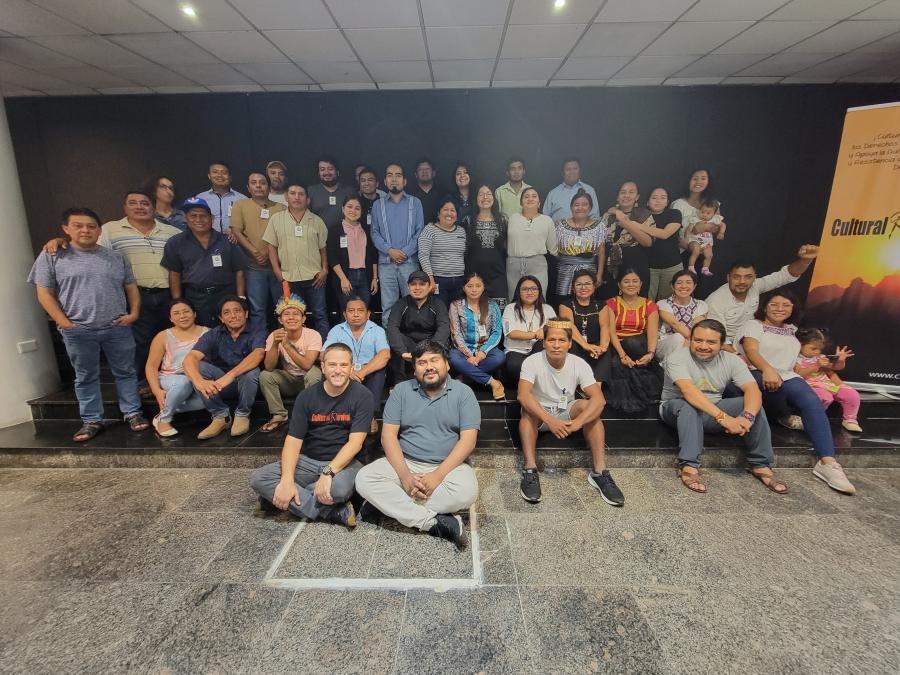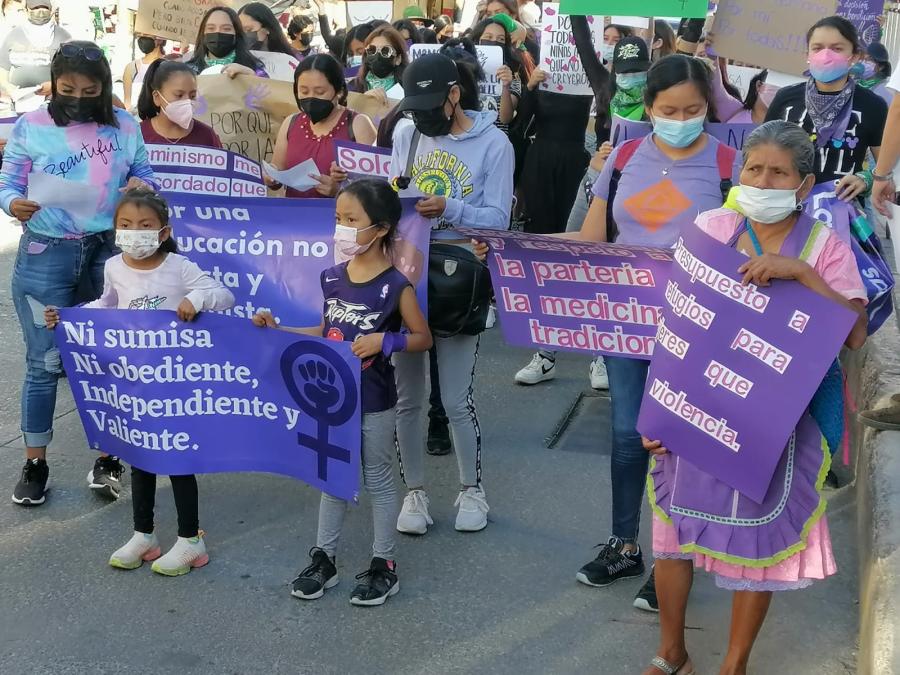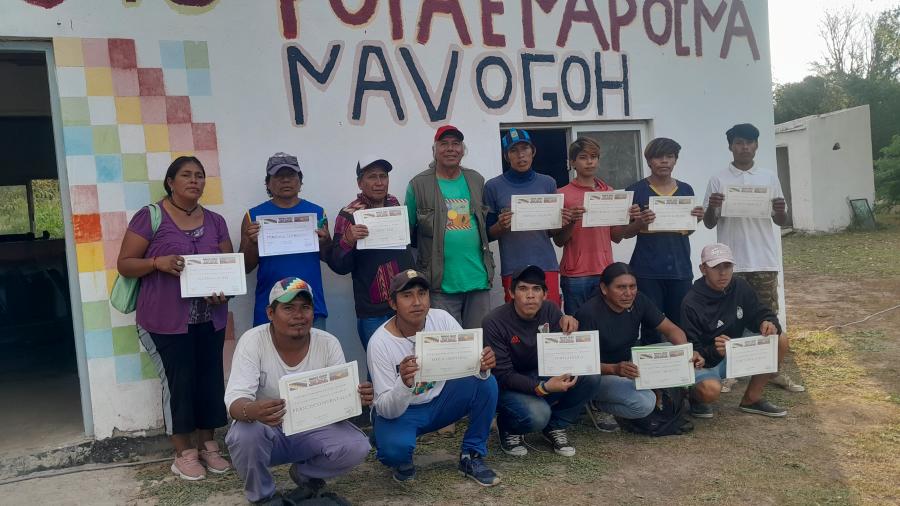Protagonists in the nineteenth-century Caste War of Yucatan, the Maya of the rain forests of central Quintana Roo long frustrated any exercise of Mexican sovereignty over their homeland. But in 1901 a Mexican army contingent penetrated their forest buffer, occupying the Mayan redoubt of Noh Cah Santa Cruz Balam Nah (now Felipe Carillo Puerto). As the twentieth century has progressed, outsiders have invaded - and degraded - their forests, with the Maya receiving virtually no benefits in exchange.
In the last few years, the Maya have slowly begun to reappropriate their own forests. While this resource can't restore ethnic autonomy, it can provide a starting point for alternatives in community development. Thus, the Maya are grouping toward what few in the world have yet achieved, sustainable management of a lowland tropical forest. Their goal is to combine traditional ecosystem management values with scientifically based silviculture into a blend that could help provide their children with cultural continuity and economic well-being.
FRAUD IN THE FOREST
The Maya, who comprises about 25 percent of the population of the state of Quintana Roo and occupy half its territory, find themselves hemmed in by encroaching economic development and exigencies of conservation. To the north, the metastasizing expansion of the Cancun-Tulum corridior spreads along the coast in their direction, while the Si'an Kaan bioreserve to the east, established in 1986, seeks to preserve 1.3 million acres from human occupation.
At the same time, the thin, rocky soils of the yucatan peninsula make agriculture, especially the corn harvest, extremely meager. The resulting economic precariousness brings poverty: levels of malnutrition are high, illiteracy is widespread, few villages have a good supply of potable water, and electricity only recently reached many villages.
Other than agriculture and construction jobs for the tourism industry, the Maya's major source of sustenance is their forests. The lowland tropical forests, notable for their resilient adaptation to centuries of shifting agriculture, hurricanes, and forest fires, are mid-sized, growing on a flat, rocky terrain. Little rain falls five to seven months a year. Of the 102 tree species identified to date in these forests, chicozapote, source of the economically important chicle, and mahogany are the most abundant.
Besides protection, the Maya traditionally looked to the forest for what are now termed "non-timber forest products" - palms for roof thatching, fruits and herbs for food and medicine, and deer and peccary for meat. In the twentieth century, the Maya found the forest could provide cash with the arrival of the chicle economy, yet they still didn't incorporate a forest's most valuable resource, its timber, into any systematice management practices.
Beginning in the 1950s in southern Quintana Roo, a parastatal enterprise, Maderas Indusrializados de Quintana Roo (MIQRO) obtained a 30-year government concession to the timber in the forests, but exploitation remained less centralized in the Mayan Zone. It lay primarily in the hands of small-time contractors who struck deals with ejidos - agrarian collectives - for a fraction of the value of the mahogany and cedar extracted. Not realizing the value of their timber, the Maya took little interest in this aspect of their forests; the small companies steadily harvested the highest grade timbers and slowly impoverished the forests. Not only that, the companies brought in all their own equipment and workers.
Only in the 1970s did the Maya begin exploiting the forest directly by producing railroad ties. This was the first diversification of the use of the tropical forest away from precious timbers and toward lesser-known tropical hardwoods. Still, it brought no real solution to the region's generalized poverty.
In the early 1980s, however, in a development that would have repercussions in the Mayan Zone, a unique confluence of events and actors came together in the southern part of the state to form what is known as the Pilot Plan of Quintana Roo. As MIQRO's 30-year concession neared its end, a progressive governor and a supportive forestry undersecretary combined with grassroots protests to defeat a renewal of the contract. A final element in creating the Pilot Plan was an agreement for German technical assistance, with the express aim of training and organizing ejidos to manage their own forests.
The technical team began its work in the ejidos of southern Quintana Roo, which is mostly populated by non-Indian colonists from Veracruz and Campeche who had come to the area to gather chicle. Progress was encouraging, so in 1984 a separate team started working in the Mayan Zone. However, the team was young, inexperienced, and spoke no Mayan. It quickly met with rejection from the Maya, who had learned through long and bitter experience that little good came from outside, even from committed young foresters. Further, the Maya weren't very attracted to managing mahogany trees. Instead, Mayan communities were interested in agriculture and health clinics.
After a period of hostility, the team refocused on a forest-related issue that did interest the Maya: the miserable prices they got for railroad ties. At the time the team arrived in the Mayan Zone, several corrupt ejido unions controlled the sale of ties. Corrupt leaders deceived tie producers as to volumes of ties produced, prices, payments dates, and taxes. Facilitating the deceit was the fact that Ferrocarriles Nacional de Mexico, the state railroad company, is the only market for ties, but producers had no contact with it.
The technical team taught the Maya about scaling, a simple technique for measuring wood volume. Scaling gave the Maya a tool to know the exact quantity of wood they produced and sold to the unions and immediately revealed the deception. This led to the first direct meeting between some producer ejidos and a representative to Ferrocarriles, a discussion that laid open the fraud of the ejido unions. One independent ejido, X-Maben, even arranged a direct sale of railroad ties to Ferrocarriles.
The fraud and the struggle to eliminate intermediaries led to conflict and tension within ejidos and between ejidos and the unions. During this period, some government officials, who benefited from arrangements with the corrupt ejido unions, tried but failed to throw out the technical director of the Pilot Plan in the Mayan Zone. Over 600 community members mobilized to protect their advisor. That success emboldened the ejidos to frontally attack the corrupt unions and market ties directly to Ferrocarriles. Secessionist ejidos, with the support of the Pilot Plan, formed a marketing group to negotiate with Ferrocarriles. Eventually, the unions dissolved. More important, in December 1986 the Organization of Forest Production Ejidos of the Mayan Zone of Quintana Roo (OEPF-Zona Maya) was born, with 14 ejidos as founding members.
LEARNING THE BASICS
OEPF-Zona Maya, which eventually gained five more members, found itself with a vast dominion to manage. Its ejidos, all in central Quintana Roo surrounding Felipe Carillo Puerto, occupy almost one million acres, with about half that designated as permanent forest reserve. The reserve can be managed sustainably for timber, but it can't ever be converted to any other land use. Most of the 16,000 people in the area depend heavily upon the forest.
The immediate consequences of managing their own sales, even before ejidos could learn to manage the forest, were dramatic. The price they received for mahogany went from about 1,000 pesos a cubic yard to about 25,000 pesos. The price of railroad ties also surged, as the costs of corruption were eliminated.
The burst of prosperity brought a succession of reactions. The first was huge parties in most ejidos. Second came the purchase of stereos, TVs, and cameras. Then, slowly, as people realized that the income was a long-term part of their lives, they improved their homes and diet and bought school supplies and clothes.
The Maya also gained a new sense of themselves in relation to forests. "The organization has brought change," Abundio Canché, the Mayan president of OEPF, noted recently. "Before, the campensinos didn't know what forest production was; the buyers were the ones who knew and told us what to do. Now the ejido is the owner because the campesino is organized and knows his work."
What the campesino must know to do the work of forest management is growing exponentially, and the Maya are scrambling to catchy up. While the Maya respect nature and have a deep knowledge of the rain forest, they basically use it for agriculture and gathering, not the industrial production of timber. Further, economic pressure threatens to undo their equilibrium with nature. They could lose it all if they don't take decides steps toward balanced forest management, melding traditional ecosystem values with that of sustainability.
In 1987, OEPF's technical team began promoting this new forest knowledge by engaging each ejido in inventorying its territory to profile the state of the forests. OEPF has now invetoried 364,000 acres. It knows, with some degree of confidence, the density and distribution of many species and has defined the boundaries of the permanent forest reserves. Using a (debatable) figure of 50 years to estimate harvest age for mahogany, OEPF has divided the permanent reserves into 25 plots, one to be harvested each year.
OEPF aims to plant ten trees for each one it takes out. For this purpose, it maintains a large nursery in Carillo Puerto and several others in member ejidos. Many communities take reforestation seriously and deal harshly with those who don't participate. The ejido of Naranjal denied a share of profits to one member for three years for failing to participate in reforestation.
To deal with forestry and other issues, OEPF's General Assembly elects officers for two-year terms. The officers supervise the work of the technical department, a mix of college-trained foresters, other professional, and paraprofessional Mayan foresters. The team is still led by the first foresters who arrived in 1984, lending trust and continuity to the technical support. The technical department trains and supervises community members in managing and harvesting the forests. This involves such tasks as defining cutting areas, marking trees to be cut, and learning cutting and extraction techniques. The department also conducts research leading to better management and supervises reforestation, fire control, and studies of forest dynamics. An important aspect of it work is administering two OEPF sawmills, plus two new portable sawmills.
In 1990, OEPF received official authorization for its own "forest technical services," supported by a tax on tree harvests. This step is particularly important since only the federal government can authorize timber cuts and mark specific trees for harvest each year. The concessions traditionally went to private organizations, despite many complaints of abuse from communities where the trees were felled. Now, each ejido decides what to do with its forest. Ejido enterprises produce logs, while individuals make railroad ties, with marketing coordinated by each ejido.
TOWARD SUSTAINABILITY
While OEPF has focused concern on the region's forests, sustainable forestry is still in the future. As a step in this direction, since 1990 OEPF has undertaken to establish "Permanent sampling plots" to systematically study rainforest growth. Because the variations and conditions of growth and the regeneration ecology of many lesser-known tropical hardwoods are little understood, it is difficult to gauge what might constitute a sustainable harvest. The dynamics of tropical-forest regeneration, and especially of mahogany, is complex.
As forest ecologist Laura Snook has noted, mahagony regeneration requires abundant sunlight and large gaps in the forest. In felling mahagony trees and creating favorable conditions for their growth, many other species around a given tree must be felled as well. The absence of demand for many of these less-known tropical species is a major block to economically feasible silviculture.
As this problem suggests, the entry costs to sustainable management are high, and the Maya have trouble meeting them. Studies of the dynamics of rain forests are underway in southern Quintana Roo, but the process has been far slower and more uncertain in the Mayan Zone. The Maya can afford to support only the most minimal technical services. This leaves little for training, product and market research, refining utilization plans, managing permanent sampling plots, or evaluating earlier reforestation efforts.
Besides dealing with the economics of substainability, OEPF faces a host of market and financial hurdles. Government support has always been precarious, as the Pilot Plan - now called the State Plan - has focused on southern Quintana Roo, where a market in railroad ties never developed and mahogany stands are richer. Meanwhile, OEPF's other sources of income are tightening. Initial estimates of sustainable harvest lowered the number of mahogany and cedar trees being taken out, reducing profits even as the unit price skyrocketed. Moreover, competition is intense, especially because of clandestinely harvested mahogany entering illegally harvested mahogany entering illegally from Guatemala. The OEPF has had buyers cancel purchases because Guatemalan mahogany goes at half the price.
As for the price of railroad ties, it has stagnated since the initial surge. Individual incomes rely quite heavily on railroad ties, and the only market is declining, with Ferrocarriles facing hard times itself and switching to concrete ties. Further, making railroad ties is back-breaking work, takes an entire tree, and generates around nine dollars of income for two days work. And despite major steps toward better management of the forests, many Maya remain far more concerned with the price of railroad ties.
OEPF has an urgent need to find new products and new markets for less-known species. As important step would be to have its practices certified as sustainable by an international agency. Certification would enable to Mayan Zone to tap the small but growing network of woodworkers and furniture makers in the United States, Canada, and Europe who are committed to helping Third World producers diversity into lesser-known tropical timbers - if the wood is sustainably harvested. Several ejidos in the Pilot Plan in the southern part of the state have gained certification and exported certified timber.
Similarly, the Mexican Association of Art and Popular Culture, a Mexican artisan organization, recently began helping the Pilot Plan in southern Quintana Roo develop high-quality wooden blocks and toys from lesser-known tropical species, and a few of these items are being exported to the United States. To participate in this venture, OEPF has received funding from the John D. and Catherine T. MacArthur Foundation for several carpentry workshops.
OEPF can also do much more with other stages of the process of turning trees into products. Only very recently have four of its member ejidos gotten their own sawmills. Unprocessed logs comprise most other sales. OEPF has added a portable mill, and this light-weight, low-impact technology may help the enterprise make a case for sustainable management.
Granted, the Maya have a long road to travel to regain the forest as a cultural and economic buffer, and their experiences shows that indigenous peoples don't inherently have the skills needed to manage sustainable industrial production. Nevertheless, the Mayan experience also shows that indigenous values are an indispensable bedrock for a system of sustainability to work. It also reveals that traditional social systems can provide raw materials to build new forms of organization necessary to run a modern forest-products business.
In the final analysis, the task of the Maya is that of advanced industrial societies: how to combine economic efficiency, ecological sustainability, and a democratic society. Starting with great historical disadvantages, the Maya are at least as far along that road as any of us.
Article copyright Cultural Survival, Inc.



